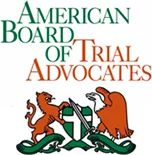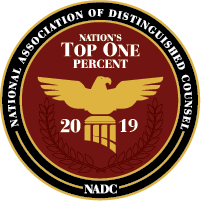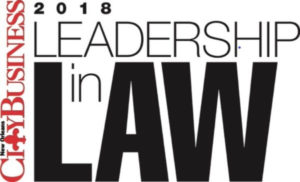Frank Lamothe recently published an article on “Safe Cornering” in Thunder Roads, a motorcycle magazine. He and LLF attorney Richard Martin are avid riders and they understand motorcycle dynamics, physics and motorcycle law. LLF supports several motorcycle safety organizations including Road Guardian, Accident Scene Management, Motorcycle Safety Foundation, ABATE of Louisiana, Inc., and the Motorcycle Riders Foundation. Read the article here.
Safe Cornering
by Frank E. Lamothe, III
Lamothe Law Firm, LLC
Cornering is one of the most exciting aspects of motorcycling. The thrill of going around a corner at a crisp speed is unparalleled. Cornering also poses a danger to motorcyclists who are inexperienced or inattentive. There are many articles written on cornering, however, it is always worth revisiting safe cornering techniques. Most single vehicle motorcycle accidents involve improper cornering.
To properly corner, one has to evaluate the corner and then properly set up for the corner. Does it have a negative camber? Is it a decreasing radius turn? How wide is the lane through the turn? How tight is the turn? Is it a blind turn? Does it have any road hazards such as gravel or a flattened tin can or a tar snake on the roadway? All these things and more must be considered in preparing for a corner
After assessing the corner, you must set up to take the corner. What will be my lane position prior to entering the corner? Usually an outside to inside path is preferred since it helps straighten the corner out. However, this choice must be evaluated in light of road and traffic conditions. Race or track cornering involves apexing the turn which means being close to the outside line on both sides of the lane. This is the fastest way through a corner. It also means no margin for error. It invites the possibility of meeting opposing traffic head on the center line or running wide in the turn. When not on the track, I prefer a cornering line which avoids these extremes. A well known safety instructor and author David Hough calls it a delayed apex turn. I refer to it as a touring turn.
When I was in North Carolina and going around a blind curve, I encountered a dump truck that was 3 feet inside of my lane coming opposite me. Only by hard aggressive countersteering which resulted in scraping pegs was I able to avoid a head-on collision which would have been fatal to me. It can pay to stay inside the lane by some margin. While not as fast, it allows for an increased margin of safety going through a turn.
Next, what entry speed will I have? It must be suitable to the corner being taken. Can you rely on speed signs? Some motorcyclists like to take the speed sign and then add something to it. There is a formula going around where the aggressive cornerers will double the warning speed sign and then add 10 mph to it. I have a friend who espouses this manner of choosing entry speed. Unfortunately speed signs are not reliable indicators of entry speed. Some 25 mph corners can safely be taken at 45 mph, sometimes 15 mph corners are really 15 mph turns. The best approach is, while considering speed warning signs, use your eyes to make a determination of safe entry speed. It’s better to go in too slow and then add speed than to go in too fast and saying “O __, what do I do now?” The more experience you have, the better you can pick safe corner speeds. Even experienced riders can sometimes make mistakes. They can overestimate the speed for entering a corner and end up in trouble.
Last month on a motorcycle trip to North Carolina, we went to lunch at Two Wheels of Suches in Suches, Georgia where we had a great hamburger. After departing on Hwy 60 to head back to North Carolina, my riding partner and I encountered and rendered aid to a rider who had gone wide on a turn and ended up in a ditch with a broken shoulder.
After establishing lane position and entry speed, a turning point must be selected. You should visualize an X on the pavement where a crisp turn will be executed through counter steering. This is the most efficient and responsive way to turn the motorcycle. If you plan to shift body position on the motorcycle, this should be done prior to this point. Always look where you intend to go since the motorcycle invariably goes where you look.
So now you’re in the turn. If all is well – use maintenance throttle to keep speed constant in the first phase of the turn, then accelerate out of the turn. Do not brake in the turn. The only exception is if you need to brake to scrub speed – stand the motorcycle up first, then brake. This presumes there is a safe place to go which is problematic in many turns. The other choice is to lean the motorcycle more aggressively to clear the turn. If you are not already scraping pegs, you have room to do this. Just don’t panic and brake while leaned over since you may lose traction. There’s only so much traction available in a turn and if you use it up, you’ll end up in a slide which will either scrape you up or at worst send you into opposing traffic which can result in a fatality.
Try to be smooth in the turn. Always look where you intend to go since you will go there. If you panic and look at where you don’t want to go, it will only increase your likelihood of ending up there.
As you complete a turn, crisp throttle will bring you back up to speed and help the motorcycle stand up again in exiting the turn.
In group riding, do not feel you have to follow the fastest rider. Some riders who are extremely experienced and can negotiate corners at relatively high speeds and can do so safely because they have done it many times. New or inexperienced riders should build up to those levels and not attempt to replicate them because you’re out on a ride with someone who is at another level of experience. Remember always “Ride your ride” not someone else’s ride.
Cornering is exciting but it can also be hazardous. It is wise to always be attentive and mindful of the various factors involved in cornering and do it safely. There’s nothing more rewarding than to negotiate a corner in a smooth and crisp manner. Happy cornering.









